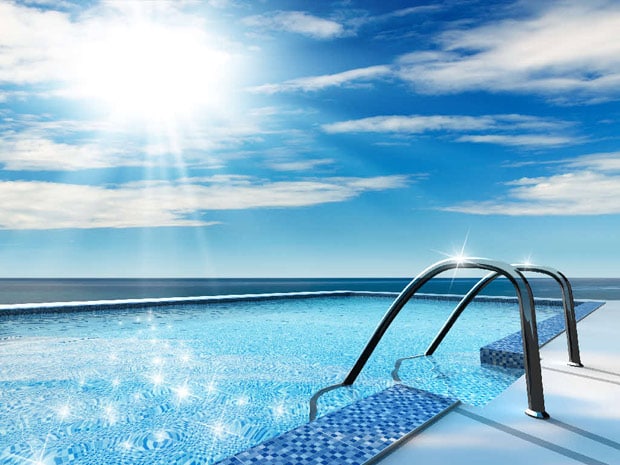Microorganisms and bad bacteria are continually released into swimming pool as h2o by swimmers, rain, dust, filth, and natural components such as leaves, rainwater, urine, grass and insects. Along with that, soiled decks, toilets, locker area amenities, bathers, and personalized things are potential condition transmitters. To combat these resources of contamination and to stay on top of the sanitizing process, the pool owner has to be involved with the cleanliness and sanitation of the entire facility knowing that the volume of microbial material in the pool is affected by the pool waters organic articles, pH, temperature, ambient light-weight, turbidity, salinity, and specifically the concentration of offered disinfectant.
Waste goods like urine, fecal content and physique oils have many organisms that could cause conditions or bacterial infections. Insufficient residuals of a halogen-dependent disinfectant in the pool, enhanced bather masses, use of the pool by contaminated individuals, and imbalances in the drinking water chemistry significantly will increase the prospective for human ailment. Correct manage of illness organisms is mandated by point out and neighborhood health regulations that call for swimming pools be preserved to stop the spread of conditions and infections that affect the skin, eyes, ears, nose, throat, and digestive system. Due to the fact swimmers usually swallow pool h2o inadvertently, it is important that the bacteriological drinking water top quality intently resemble drinking water. Infectious conditions have been related with swimming pools and spa/sizzling tubs or therapy swimming pools.
Germs are microscopic single-celled organisms that lack chlorophyll. Hundreds of millions of these cells equivalent the size of 1 grain of granulated sugar. When microorganisms are magnified to extreme, they appear no bigger than a dot on this page. Bacterial cells reproduce by dividing in half (fission) to turn out to be two equivalent cells. Under ideal situations, some bacteria reproduce as often as soon as every 15 to 30 seconds.A single bacterium could become 70 billion microorganisms in only twelve hours. Bacteria are divided into two significant groups based on a staining method referred to as a Gram stain. These that stain a violet color are called Gram positive illustrations are the bacterium that triggers tetanus (Clostridium tetani) and the bacterium that brings about pimples bacterial infections Staphlyococcus aureus). These that stain one more color are known as Gram negative examples are the bacterium that leads to typhoid (Salmonella spp.), and a bacterium that can split down or contaminate a variety of residing and nonliving items. The h2o can carry pathogens to the swimmer’s gastrointestinal tract, skin, eyes, ears, nose, throat, and other locations of the human body where micro-organism can very easily grow. For illustration, this sort of bacteria as Salmonellae, Shigellae, Campylobacter sp., Giardia sp., and so forth. have been associated with gastrointestinal ailment when swimmers swallowed contaminated h2o.
Aside from gastrointestinal ailments, infections obtained from pools include Chlamydial conjunctivitis (eye an infection), pharyngonjunctival fever, coxsackie viruses, planter warts, athlete’s foot and swimming pool granuloma. Illnesses connected with scorching tubs consist of folliculitis, dermatitis, conjunctivitis (eye bacterial infections), pneumonia (lung bacterial infections), Otitis externa and Otitis media (ear infections), urethritis owing to the germs of the Pseudomonas genus, specifically P. aeruginosa, and many other strains.
